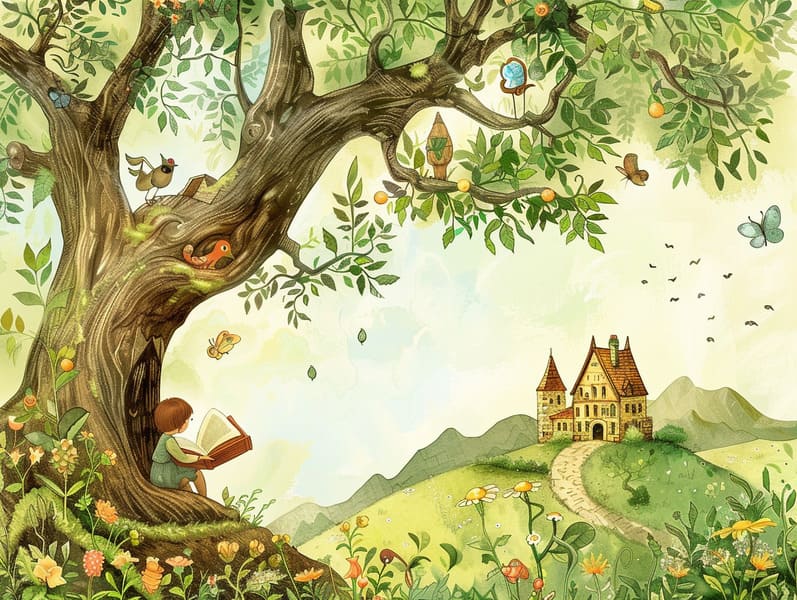The Genesis of Old Fairy Tales and Its Steadfast Delight.
The Genesis of Old Fairy Tales and Its Steadfast Delight.
Blog Article

Old fairy tales have long histories. These narratives have been transmitted from one generation to the next millennia before they were ever documented. They arose from a variety of traditions, including Western traditions. They were initially shared among mature audiences, often carrying themes and messages reflective of the societal norms and beliefs of the time.
The Grimm brothers, Jacob and Wilhelm (the Grimm brothers), were among the first to compile and release many of these beloved narratives. Their volume, "Grimm's Fairy Tales," included stories like "The Story of Cinderella," "Hansel and Gretel," and "Schneewittchen," which have since become mainstays in the world of famous fairy tales. Similarly, Andersen's charming narratives, such as "The Little Mermaid," and "The Duckling that Could," have captivated hearts worldwide, establishing their place in the pantheon of timeless fairy tales.
Even though they are old, traditional fairy tales remain as relevant as ever, especially as bedtime stories for kids. These whimsical stories are now available in different formats, including vividly illustrated books, whimsical animations, and free fairy tales online.
Their continued relevance can be traced to several delightful features:
Crucial Morals: Traditional fairy tales often whisper important moral lessons. Tales like "The Tale of the Boy Who Cried Wolf" teach the significance of honesty, while "The Tale of the Tortoise and the Hare" exemplify the qualities of perseverance and unpretentiousness. These stories offer children clear distinctions between right and wrong, guiding their moral compass in a subtle yet meaningful way.
Empathy and Awareness: Traditional fairy tales frequently feature heroines facing challenges and problems, urging audiences to relate with their struggles and rally behind their triumphs. For instance, "The Story of Beauty and the Beast" points out the value of appreciating inner worth to realize the inner core of a being, cultivating empathy and appreciation.
Cultural Perception: Many ancient fairy tales are rich in the cultural contexts from which they came. Learning from these narratives can provide delightful insights into different societies, promoting a sense of world awareness and awareness.
Fantasy and Imagination: The mythical elements in timeless fairy tales—magical spells—spark children’s fantasies. These stories take readers to otherworldly realms, invigorating inventive dreams and a sense of enchantment that remains a lifetime.
Ancient fairy tales are not only enchanting but also enlightening. They provide delightful tools in nurturing various brain and heart skills in the young. When traditional fairy this site tales are recited, they promote verbal development by introducing new terms and meanings and sophisticated sentence structures. This practice also boosts hearing perception and mental focus, as little ones track the narrative, keen to see what happens next.
Furthermore, reflecting on the themes and characters of classic fairy tales can enhance thinking skills and thinking skills. Children are shown to discern patterns, anticipate outcomes, and figure out cause and effect. These deliberations also boost young ones speak out their thoughts and feelings, contributing to their emotional intelligence.
In today’s technological era, the presence of internet fairy tales has made these narratives more within reach than ever. Web-based platforms and digital apps feature wide arrays of Grimm's fairy tales that can be browsed or heard anytime, anywhere. Fairy tales read out loud are particularly in demand, featuring an fun way for kids to immerse in these captivating stories. Spoken stories and read-to-me videos guide characters and settings to life, often complemented by charming harmonies and harmonies that elevate the tale journey.
The enduring charm of classic fairy tales lies in their ability to adjust to modern society while retaining their basic principles. Contemporary reimaginings of these stories often highlight more different characters and modern settings, making them accessible to today’s audience. However, the central morals of heroism, generosity, and equity remain unchanged, continuing to reach readers of all ages.
Ancient fairy tales also offer a sense of warmth and comprehensibility. They provide a well-ordered narrative with a evident beginning, middle, and end, often drawing to a close with the ending of conflicts and the triumph of right over wrong. This assuredness can be soothing for young readers, extending a sense of consistency in an dynamic world.
Old fairy tales continue to captivate and instruct new generations, maintaining their captivation and meaningfulness in modern society. As nighttime stories for kids, they distribute a perfect blend of delight and instruction, boosting moral values, empathy, and creativity. The availability of digital storybooks and the widespread nature of fairy tales read aloud certify that these classic narratives remain reachable to new generations.
By safeguarding and conveying these stories, we continue to cherish the rich tapestry of human imagination and cultural heritage. Whether you are browsing a vividly illustrated book, discovering a digital library, or listening to an sound book, the charm of ancient fairy tales is always within reach. These narratives highlight of the unceasing ability of stories and its ability to unify us across time and space.
Whether you are accessing a beautifully illustrated book, viewing a cyber collection, or listening on an audiobook, the splendor of classic fairy tales is always within reach.
These stories point out of the endless magic of tales and its ability to join us across time and space, forging a link that captivates and teaches alike.